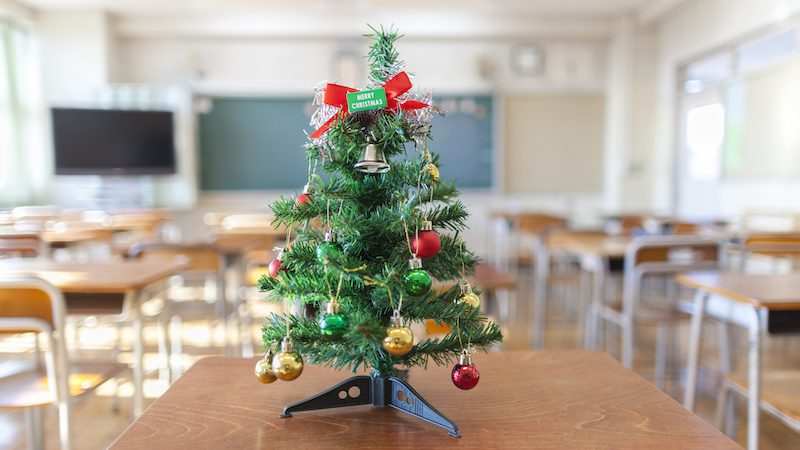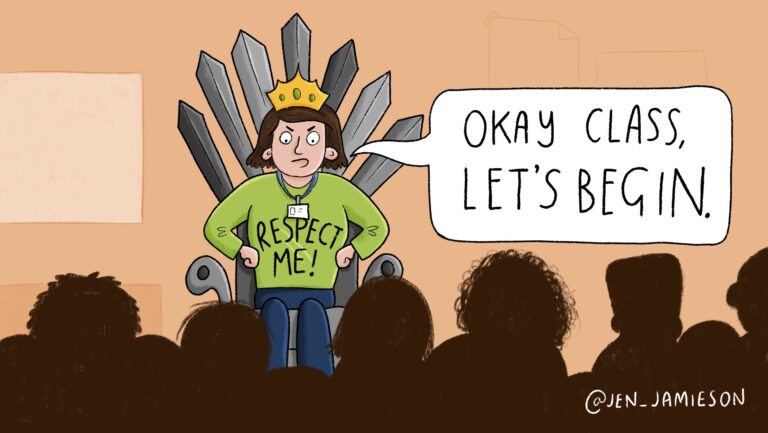It’s that time of year again—when well-meaning teachers across the country prepare to teach their young learners all about the joys of the season. That is, holidays! Specifically Christmas, Hanukkah, and Kwanzaa.
It’s not that this is necessarily a bad thing in and of itself. But as a plan for inclusion, it doesn’t pass muster. So if this is your go-to curriculum for winter, it’s time to ask yourself some hard questions:
What’s my real reason for doing this?
Take a long hard look at your lesson plans around winter holidays. Are they fairly Christmas-centric? Do Hanukkah and Kwanzaa feel like add-ons? I’m sure some teachers strike a balance, but my sense is that mini-lessons on other holidays is their justification for continuing Christmas-centric activities like writing letters to Santa or a classroom Elf on the Shelf.
Think of it this way. Did you make as big a deal out of Yom Kippur this fall? Because that is a much more significant holiday in Judaism. And that’s what makes this practice of teaching all the holidays feel so surface level.
What exactly am I teaching?
It is not illegal to teach about holidays in schools. BUT (and it’s a big but), while you can teach about religion, you can’t promote religion. The Anti-Defamation League explains it this way, “While it is constitutionally permissible for public schools to teach about religion, it is unconstitutional for public schools and their employees to observe religious holidays, promote religious belief, or practice religion.” Check that your content doesn’t cross the line.
So does that mean that commercialized stuff is OK because it’s “not religious?” Nope. And I’ll admit I’ve been guilty of this. But according to the NAEYC, “Secularized versions of holidays are not culturally or religiously neutral.” And they’re right. A Christmas tree, for example, comes from a dominant culture religious holiday and is grounded in certain cultural assumptions. Hence, not neutral.
Do these holidays reflect the lived experiences of my students?
When you bring in Christmas and Hanukkah, how do your Muslim and Hindu students feel? What about non-religious students? Does the way you teach Kwanzaa (do you really know what it’s all about?) actually make your Black students feel that their beliefs are being trivialized? When you limit your instruction to certain holidays, you also send the message that they matter more than others. It’s an exclusionary practice, it’s not culturally responsive, and it’s not OK.
What might I do instead?
The good news is there are so many ways to keep the classroom vibes festive this time of year without stepping into the religious and cultural territory that belongs to families, not teachers. Here are my top recommendations:
- Swap your Santas for snowflakes. Whereas even secular activities attached to holidays aren’t neutral, seasons are for everyone. No one’s saying you can’t decorate your door or do a themed math activity. Just be thoughtful about your choices (think: sleds, not stockings). Check out this list for over 120 neutral winter options to choose from.
- Learn about and from one another. Find out about your students’ cultural backgrounds, religions, families, and traditions at the beginning of the year. Make it part of the classroom conversation. Invite students and families to share (just avoid the tourist trap!).
- Lean into teaching vs. celebrating. Public school teachers cannot promote a particular religious point of view (thanks, First Amendment). It’s totally fine to learn about the origins, purposes, and meanings of holidays. But keep the approach academic as opposed to devotional.
- Create your own classroom celebrations. There’s no reason that classroom celebrations have to center around a holiday. And might they not be more powerful if you came up with them together? Host a “read in” in pajamas or invite friends and family members to attend an “Our Caring Communities” celebration.
- Make it a year-round commitment. If you’re going hard into Christmas, Hanukkah, and Kwanzaa, then I also want to see you bring in El Día de Los Muertos, Diwali, Lunar New Year, and Ramadan.
- Look for themes across cultures. Focusing on the values themselves (gratitude, peace, community, light, joy) keeps the celebrations meaningful without being divisive. Consider doing a service project to give back to your school or local community or making paper cranes for the Peace Crane Project.

